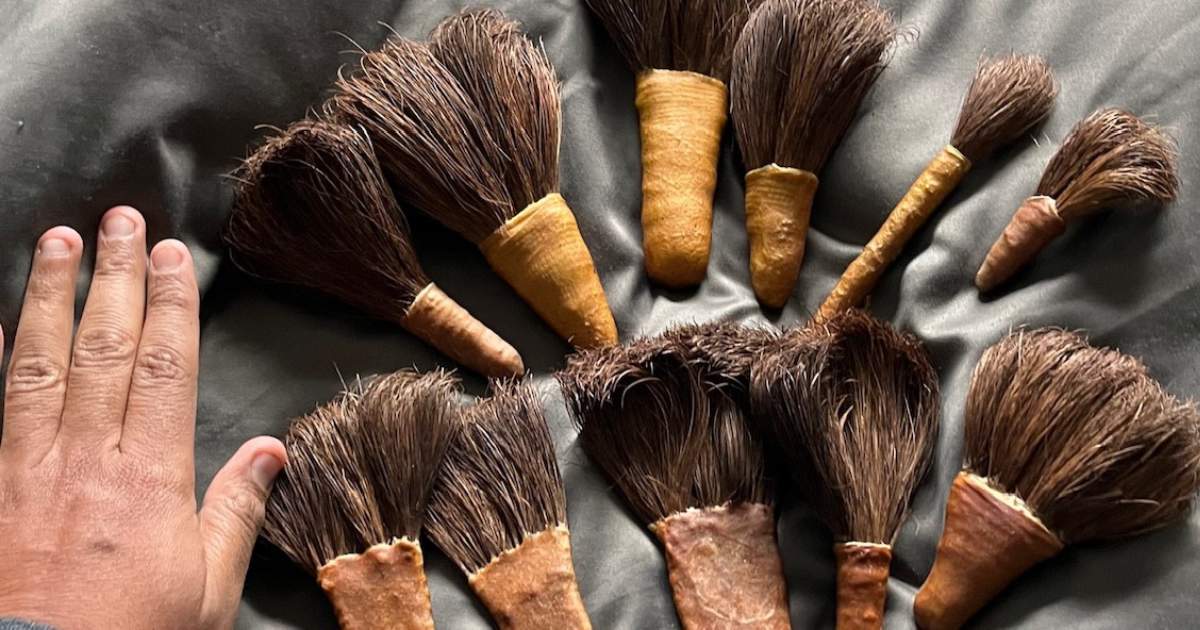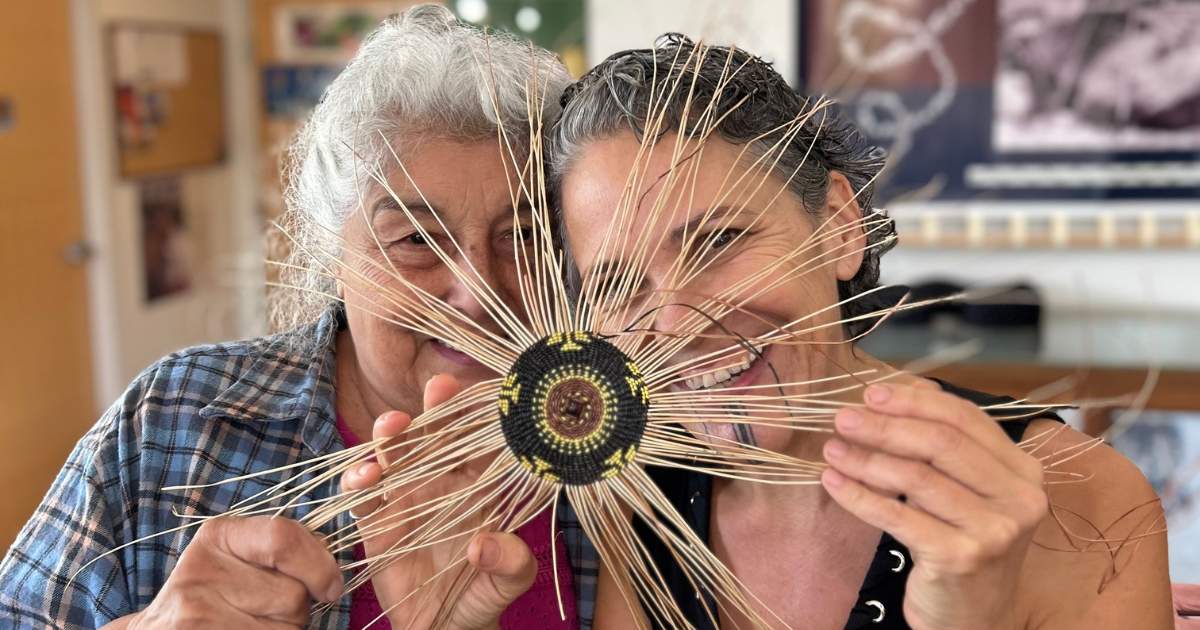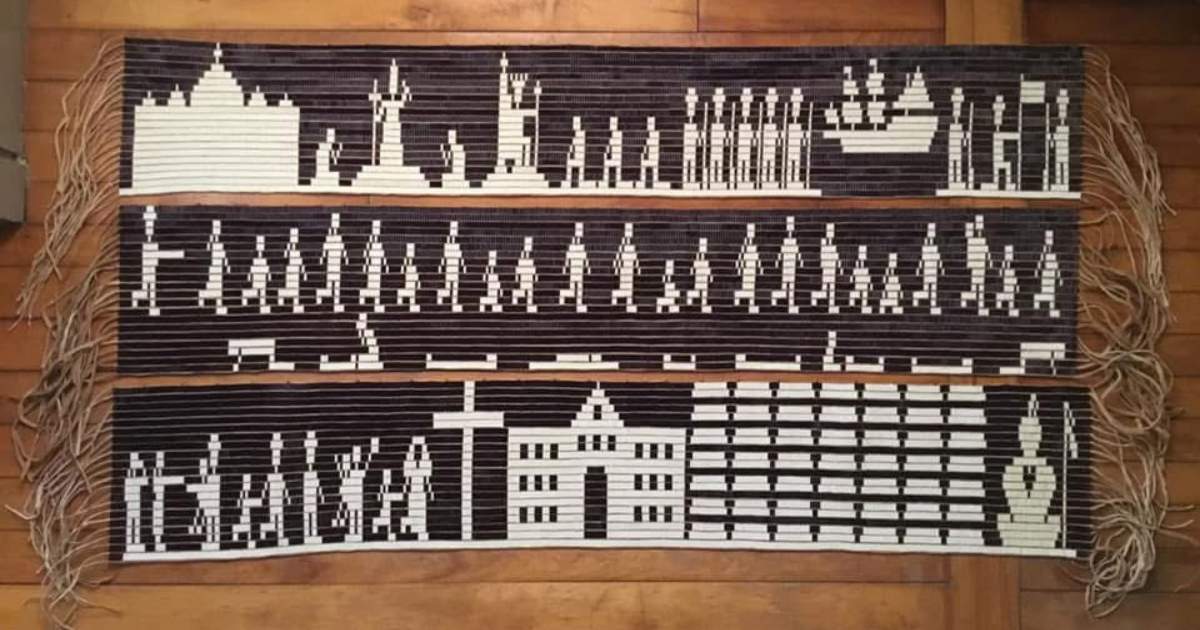
Giving Youth Confidence to Carry On Traditions
By Sarah Elisabeth Sawyer (Choctaw Nation), Artist in Business Leadership Fellow 2015
Clad in recently restored regalia, young dancers met the ferry to begin the welcome ceremony for pieces of their culture returning to the Tlingit people. Removed from the village of Klukwan in Alaska’s Chilkat Valley during the 1970s, these cultural treasures have endured a four-decade long process began to bring them home. Kept at the Alaskan State Museum for safekeeping until the village had a facility to care for and display each piece, these items were the catalyst for building a space for preserving and perpetuating culture.
In 2016 — through funding from the Surdna Foundation, assistance through First Peoples Fund, the National Endowment for the Arts, and the Institute of Museum and Library Services — the Jilkaat Kwaan Heritage Center in Klukwan opened for the community and visitors. With a population of less than 100, the village of Tlingit people offers cultural education tours that draw 3,000 visitors annually.
Executive Director of the Heritage Center Board, Lani Hotch (Tlingit), is a 2011 First Peoples Fund (FPF) Community Spirit Award Honoree, and a 2015 and 2016 Cultural Capital Fellow. She spearheaded the effort to revitalize Tlingit culture, learning and teaching the language, songs, and dances of her people. She discusses the meaning of the songs and how to portray that meaning through movement — movements that are based on animals or plants, like leaves quaking in the wind, or a salmon swimming upstream.
With the FPF Indigenous Arts Ecology Grant, Lani helped the Heritage Center oversee the repair of worn-out dance regalia pieces, and held vital workshops to expand the teaching of traditional songs and dances to youth.
“The dancers should know how to sing and drum the traditional songs, know what the songs mean, their appropriate use within the context of our culture, and how to correctly pronounce the words in Tlingit,” Lani says. “[At the workshops] we learned a couple of songs that were new to us. One is really old and came from another dance group that has been using it, but that song originated in Klukwan. We worked on that, and we’re working on composing our own song.”
Her dream has been to preserve and perpetuate the dances through young people. This spring, she saw it come to pass when the young people danced in rejuvenated regalia for the return ceremony for clan treasures coming home.
“My brother Jack Strong (Tlingit) and I have been working with youth in training and teaching them, but they were still relying on us heavily because we’d always been there,” Lani says. “But then I had to leave, and my brother injured his back. Those young people really had to step up. It was a good thing we worked with them through the winter, giving them confidence. That was a good result of those singing and drumming workshops that were made possible by the [IAE] grant.”
After the ceremony at the ferry, a motorcade of sorts followed the U-Haul, escorting the pieces home. They stopped at clan houses for welcoming speeches and songs were sung in honor of elders who passed recently. The four-decade long journey for the pieces finally ended at the Heritage Center.
The pieces are now on display at the Heritage Center, a focal point for visitors. During the summer, the village offers cultural education tours through the fish camp, adzing/carving shed, and the camp clan house. In the clan house, there is storytelling, and traditional song and dance performances.
Because of Jack’s injury, the youth continued stepping up to perform the dances held to share the beauty of their culture. Many of the people in the village work as artists, and the Heritage Center allows them to sell their work, welcome visitors, and perpetuate their culture through a vibrant arts ecosystem.
“We have 15 dancers, but we rotate them because we can’t have those same kids dancing every day. Kids need to be kids, and we may have three to five tours a day, so we rotate them,” says Lani. “Every kid dances at least a couple of times per week. Our dance performances might have a half a dozen with youth and two adult guides. We see our dance group as cultural ambassadors.”
With thousands visiting the small village each year, the Heritage Center is not only facilitating the perpetuation of culture for its community, but educating others about Tlingit people as well.
“For people who know the value of the pieces displayed at the Heritage Center, and the history behind them, that’s the highlight of their trip,” Lani says. “It’s authentic, cultural pieces that have historic importance. The people are so grateful to be able to see them and that they’re open to the public.” The wall screens and totem pole, which date back to at least the 1820s, are now home and will enjoy care in the state of the art Heritage Center in Klukwan where they and the Tlingit people belong together. Their return ceremony marked a moment in time for the Tlingit people — past, present, and future.










































































































